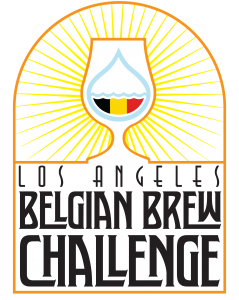21B – Specialty IPA
Specialty IPA: Belgian IPA
Overall Impression: An IPA with the fruitiness and spiciness derived from the use of Belgian yeast. The examples from Belgium tend to be lighter in color and more attenuated, similar to a tripel that has been brewed with more hops. This beer has a more complex flavor profile and may be higher in alcohol than a typical IPA.
Aroma: Moderate to high hop aroma, often tropical, stone fruit, citrus or pine-like typical of American or New World hop varieties. Floral and spicy aromas are also found indicating European hops. Grassy aroma due to dry hopping may be present. Gentle, grainy-sweet malt aroma, with little to no caramel. Fruity esters are moderate to high and may include aromas of bananas, pears and apples. Light clove-like phenols may be noticeable. Belgian candi sugar-like aromas are sometimes present.
Appearance: Light golden to amber in color. Off-white head is moderate to large in size and has good retention. Clarity is fair to quite hazy in dry hopped examples.
Flavor: Initial flavor is moderately spicy and estery associated with Belgian yeast strains. Clove-like and peppery flavors are common. Banana, pear and apple flavors are also typical. Hop flavors are moderate to high in intensity and may reflect tropical, stone fruit, melon, citrusy, or piney American/New World varieties or floral and spicy Saazer-type hop flavors. Malt flavor is light and grainy-sweet, sometimes with low toasted or caramel malt flavor but not required. Bitterness is high and may be accentuated by spicy yeast-derived flavors. The finish is dry to medium-dry although some examples have a slight sweetness mixed with the lingering bitterness.
Mouthfeel: The body is medium to light and varies due to carbonation level and adjunct use. Carbonation level is medium to high. Some higher alcohol versions may be warming although this may not be readily apparent.
Comments: The choice of yeast strain and hop varieties is critical since many choices will horribly clash.
History: A relatively new style, started showing up in the mid 2000s. Homebrewers and microbreweries simply substituted Belgian yeast in their American IPA recipes. Belgian breweries added more hops to their tripel and pale ale recipes.
Characteristic Ingredients: Belgian yeast strains used in making tripels and golden strong ales. American examples tend to use American or New World hops while Belgian versions tend to use European hops and only pale malt.
Style Comparison: A cross between an American IPA/Imperial IPA with a Belgian Golden Strong Ale or Tripel. This style is may be spicier, stronger, drier and more fruity than an American IPA.
Vital Statistics:
OG: 1.058 – 1.080
IBUs: 50 – 100
FG: 1.008 – 1.016
SRM: 5 – 15
ABV: 6.2 – 9.5%
Commercial Examples: Brewery Vivant Triomphe, Houblon Chouffe, Epic Brainless IPA, Green Flash Le Freak, Stone Cali-Belgique, Urthel Hop It
Specialty IPA: White IPA
Overall Impression: A fruity, spicy, refreshing version of an American IPA, but with a lighter color, less body, and featuring either the distinctive yeast and/or spice additions typical of a Belgian witbier.
Aroma: Moderate fruity esters – banana, citrus, perhaps apricot. May have light to moderate spice aroma such as coriander or pepper from actual spice additions and/or Belgian yeast. Hop aroma is moderately-low to medium, usually American or New World type with stone fruit, citrus and tropical aromas. Esters and spices may reduce hop aroma perception. Light clove-like phenolics may be present.
Appearance: Pale to deep golden color, typically hazy. Moderate to large, dense white head that persists.
Flavor: Light malt flavor, perhaps a bit bready. Fruity esters are moderate to high, with citrus flavors similar to grapefruit and orange, or stone fruit like apricot. Sometimes banana-like flavors are present. Hop flavor is medium-low to medium-high with citrusy or fruity aspects. Some spicy clove-like flavors from Belgian yeast may be present. Coriander and orange peel flavors may be found as well. Bitterness is high which leads to a moderately dry, refreshing finish.
Mouthfeel: Medium-light body with medium to medium-high carbonation. Typically no astringency, although highly spiced examples may exhibit a light astringency which is not distracting.
Comments: A craft beer interpretation of American IPA crossed with a witbier.
History: American craft brewers developed the style as a late winter/spring seasonal beer to appeal to Wit and IPA drinkers alike.
Characteristic Ingredients: Pale and wheat malts, Belgian yeast, citrusy American type hops.
Style Comparison: Similar to a Belgian Wit style except highly hopped to the level of an American IPA. Bitter and hoppy like the IPA but fruity, spicy and light like the Wit. Typically the hop aroma and flavor are not as prominent as in an American IPA.
Vital Statistics:
OG: 1.056 – 1.065
IBUs: 40 – 70
FG: 1.010 – 1.016
SRM: 5 – 8
ABV: 5.5 – 7.0%
Commercial Examples: Blue Point White IPA, Deschutes Chainbreaker IPA, Harpoon The Long Thaw, New Belgium Accumulation
